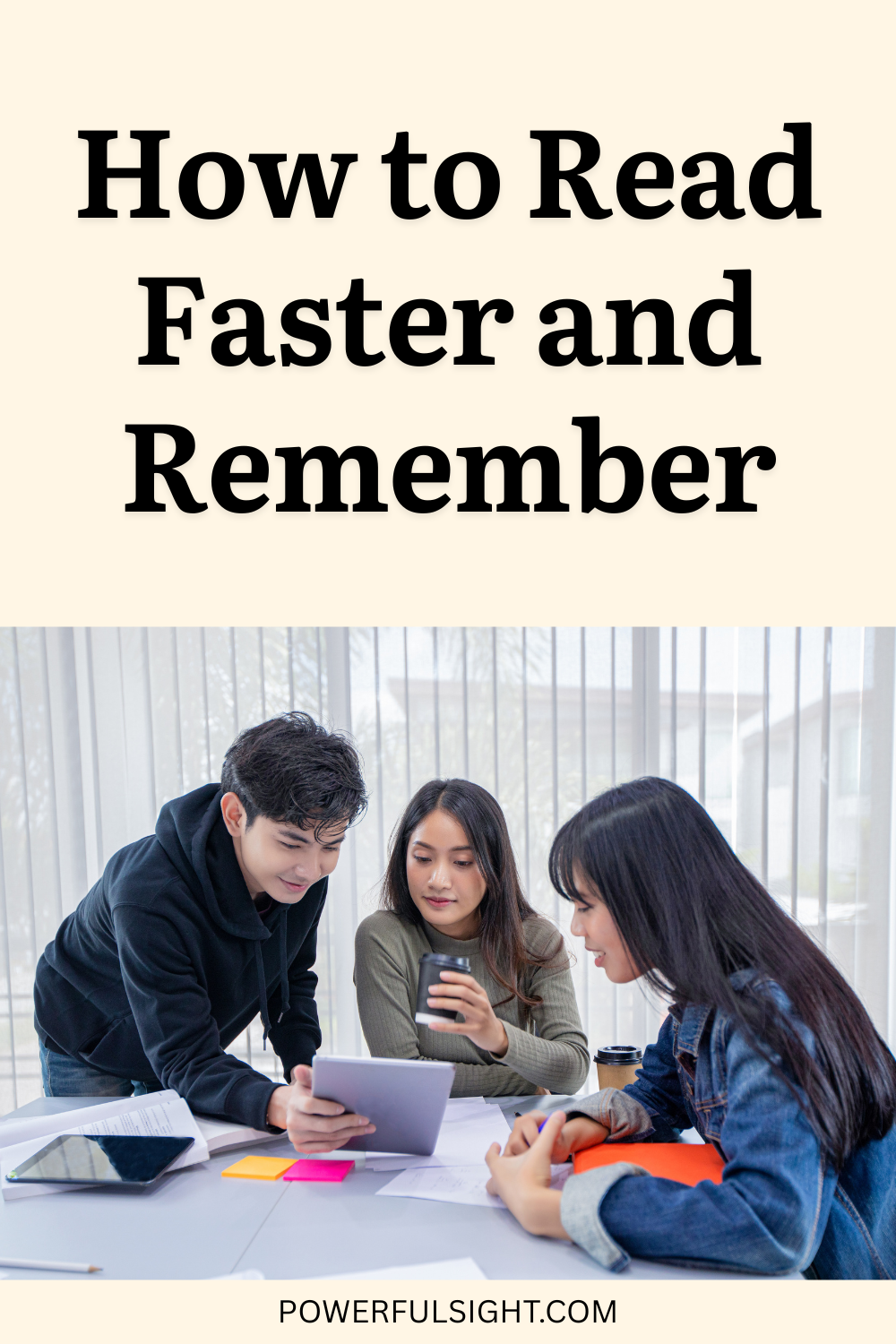For an extended period of my life, I had serious issues with reading speed. I’d pick up a book with excitement, only to lose steam after a couple of pages.
Sometimes I’d reread the same sentence or get to the end of a chapter and realize I couldn’t remember much of it. It wasn’t that I didn’t enjoy reading—it was that I couldn’t balance speed with retaining the information.
That changed when I gave up searching for quick-fix reading hacks and began experimenting with my own approach.
I realized the real goal wasn’t just reading faster—it was reading faster and remembering more. Once I made that shift, I began to discover little techniques that made reading feel easier while helping the knowledge stick.
Here’s what worked for me, and how you can try it as well.
How to Read Faster and Remember
1. Treat Reading Like a Conversation
Instead of passively absorbing words, I began to think of the author as a person I was having a conversation with. As I read, I ask myself questions: “Why did they say that?”, “Do I agree?”, “How does this connect to my own life?”
That back-and-forth keeps my brain engaged. When my mind is active, I naturally read faster because I’m not drifting off, and I remember more because I’m making sense of the ideas as I go.
Related: 8 Ways to Develop a Reading Culture
2. Use “Checkpoint Summaries” (Not Notes)
Traditional note-taking slowed me down, so I started doing something simpler: after every 3–5 pages, I pause and summarize the main idea in one sentence in my own words.
No notebook, no pen—just a quick mental checkpoint (or sometimes I say it out loud). Later, when I revisit those mental checkpoints, the entire chapter comes back to me.
Related: How to Make Studying Easier (Without Burning Out)
3. Change the Background, Not the Speed
This one surprised me: the environment you read in can affect how well you remember. When I take on something challenging, I make small background changes—like reading in a new chair, switching to softer light, or even adding a specific scent.
The brain links memories to context. So when I recall the smell or setting, the content I was reading pops up too. It’s like leaving breadcrumbs for your memory.
Related: How To Make Studying Aesthetic
4. Train Your Eyes With “Silent Sprints”
I don’t fight subvocalization (that little voice in your head that reads along). Instead, I use what I call “silent sprints.” I set a timer for 2 minutes and push myself to read much faster than feels comfortable. I don’t care if I miss some details—the goal is to train my eyes to move quicker.
When I return to a normal pace, I find myself naturally reading faster with no extra effort. It’s like training with heavier weights so normal workouts feel lighter.
Related: How To Study One Night Before The Exam
5. Connect New Knowledge to “Mental Landmarks”
One of the best ways I’ve found to remember what I read is to connect it to something I already know. For example, if I’m learning about memory techniques, I might tie it to a funny childhood story or a character from a movie I like.
The stranger or funnier the connection, the better it sticks. Your brain loves unusual pairings—that’s why random jokes stay with you longer than plain facts.
Related: 8 Effective Ways to Study with Focus
6. Stop at Cliffhangers, Not Conclusions
Most people stop reading at the end of a chapter or after finishing an idea. I do the opposite: I pause in the middle of a question, example, or story.
Why? Because the brain dislikes unfinished business. When I come back, curiosity pulls me right back in, and I don’t need a “warm-up” to regain focus. I just pick up where I left off, and the flow continues smoothly.
7. Teach It Before You Finish It
Instead of waiting until I’m done with a book, I try to explain what I’ve read so far—either to someone else or just to myself. I’ll talk through the key points as I go.
This forces me to organize the ideas in my head, and when I return to the book, I read faster because I already have a structure to build on. It’s like constructing a skeleton before adding the details.
8. Use Your “Second Channel” When Reading
Sometimes, while reading, I doodle simple shapes or symbols alongside what I’m processing. Not full notes—just quick marks that represent ideas. For example, if I read about a clever technique, I might sketch a little lightning bolt.
This activates another part of my brain (visual + movement), making the memory stronger. Later, when I recall the doodle, the idea tied to it comes back instantly.
Final Thoughts
Reading faster and remembering more isn’t about forcing yourself to use rigid techniques—it’s about working with your brain’s natural way of processing information. When I stopped chasing “speed reading” gimmicks and instead focused on being engaged, curious, and creative, everything changed.
If you try even one or two of these methods, you’ll notice that reading becomes smoother and more enjoyable. The best part? The words won’t just fly past—you’ll actually carry them with you.
Save the pin for later

- 12 Ways To Detox Your Life In 2026 - 26/12/2025
- How To Look Good Everyday - 26/12/2025
- Recognizing Soulmate Energy: 30 Signs to Look Out For - 25/12/2025
